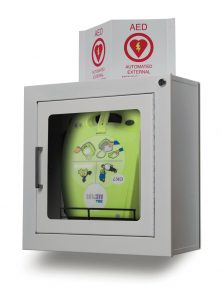Cardiac arrest survival increase when bystanders use an AED

According to a recent study in the Circulation Journal Report, Survival from cardiac arrest doubled when bystanders stepped in to use a publicly available automated external defibrillator rather than waiting for emergency responders to arrive.
The study showed that the longer it takes to emergency personnel to arrive, the greater the benefit of a bystander using an AED to shock the victim.
Victims who received a defibrillator shock from a bystander had far greater chances at survival and being discharged from the hospital than those that did not.
- Bystanders used an AED in 18.8% of these cases.
- Cardiac arrest victims who received a shock from a publicly-available AED had far greater chances of survival and being discharged from the hospital than those who did not; 66.5% versus 43%.
- Cardiac arrest victims who received a shock from a publicly-available AED that was administered by a bystander had 2.62 times higher odds of survival to hospital discharge and 2.73 times more favorable outcomes for functioning compared to victims who first received an AED shock after emergency responders arrived.
- Victims who received an AED shock from a bystander (57.1%) using a publicly-available device instead of having to wait for emergency responders (32.7%) had near normal function and better outcomes.
- Without a bystander using AED shock therapy, 70% of cardiac arrest patients either died or survived with impaired brain function.
To learn more about CPR and AED’s contact your UniFirst First Aid + Safety representative for more information.
